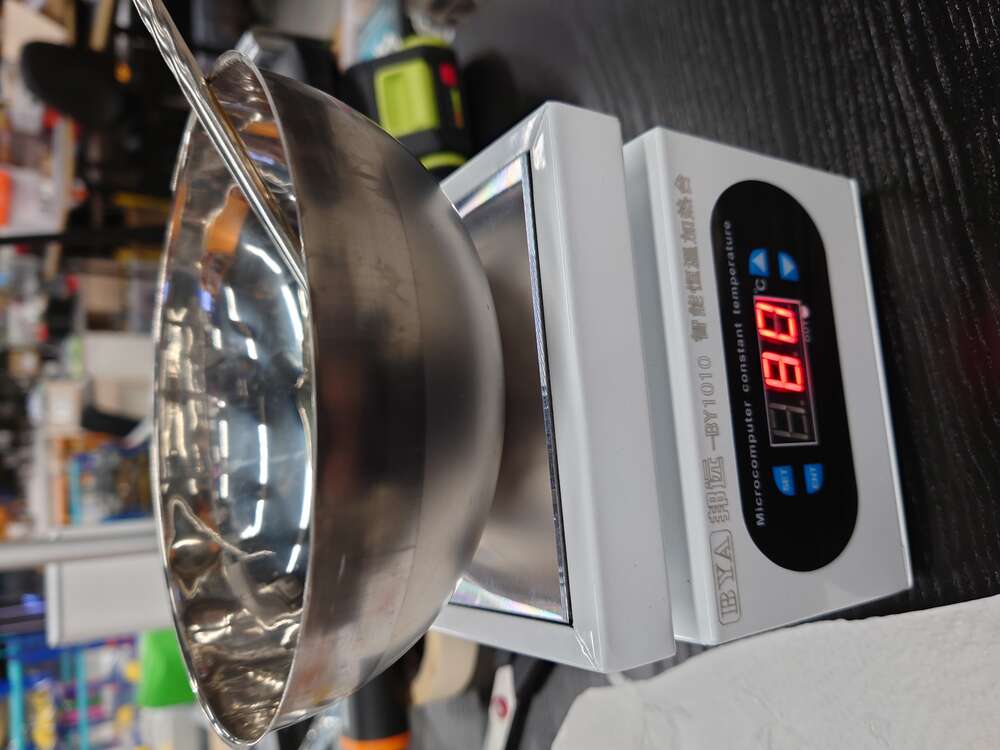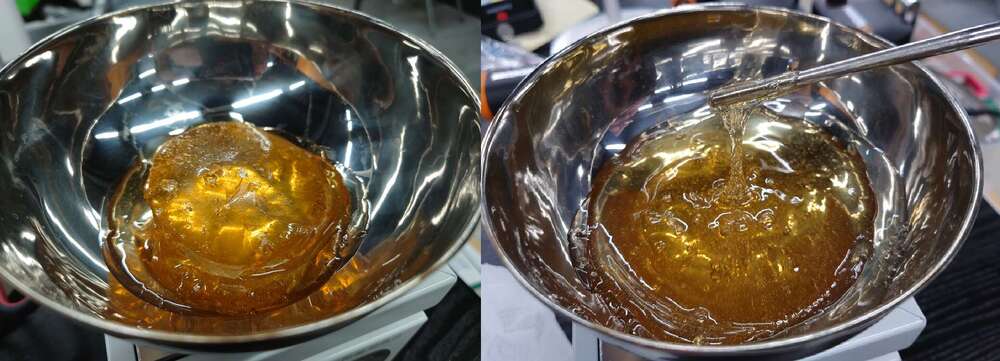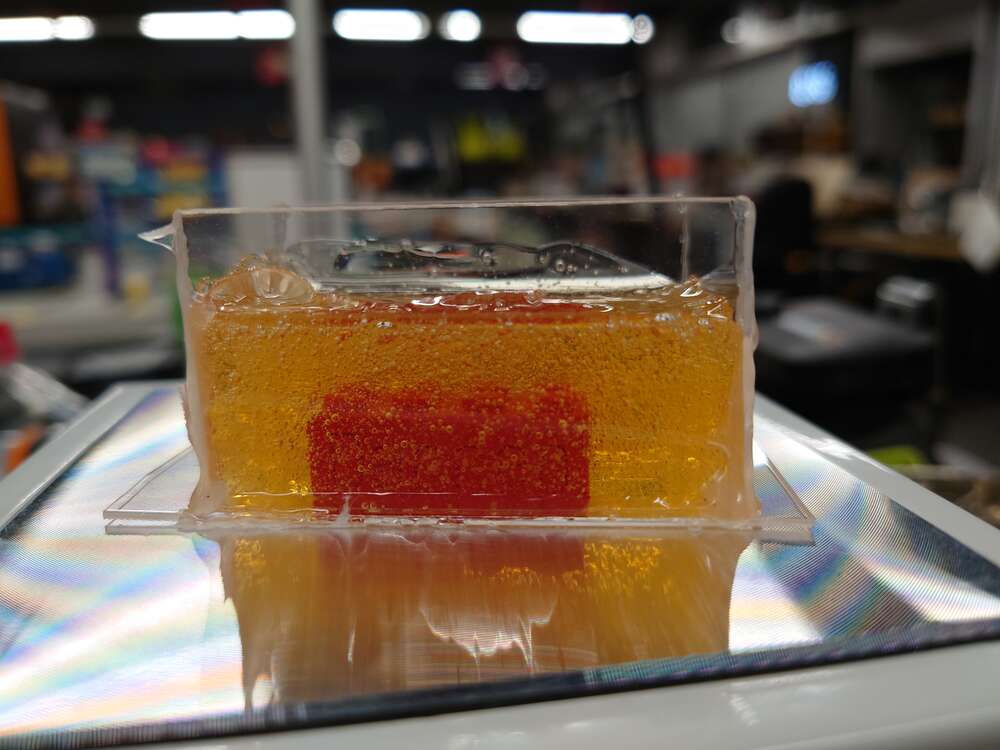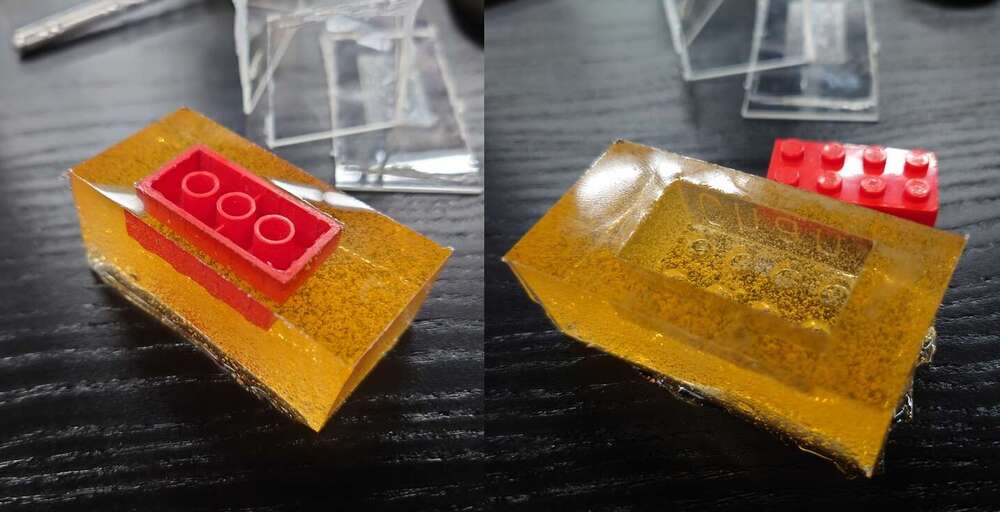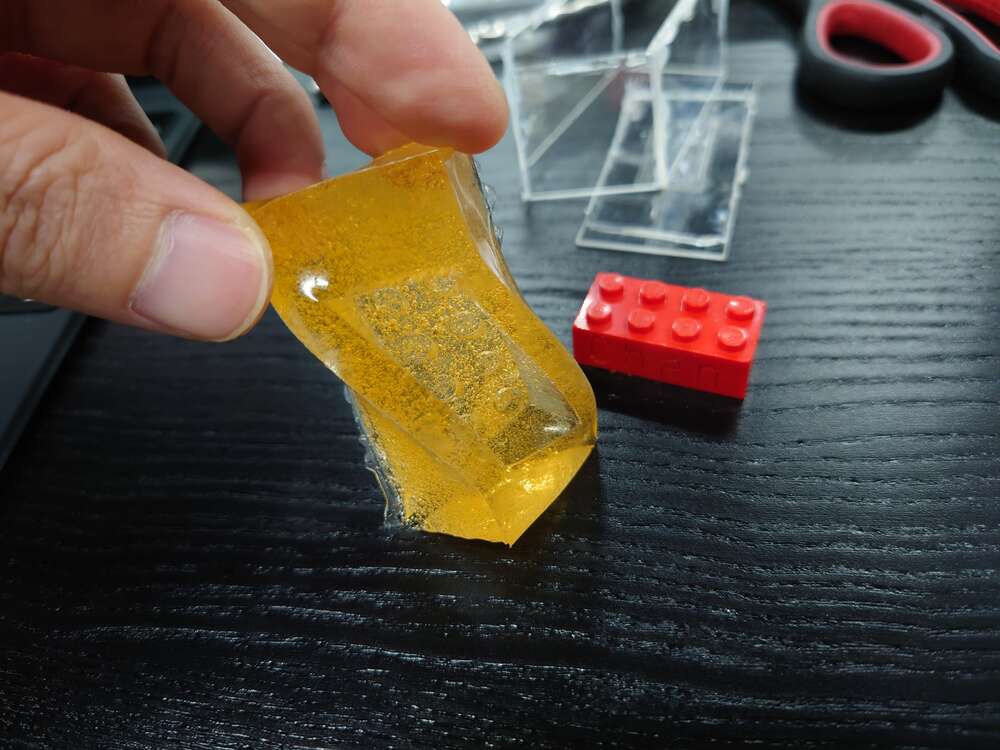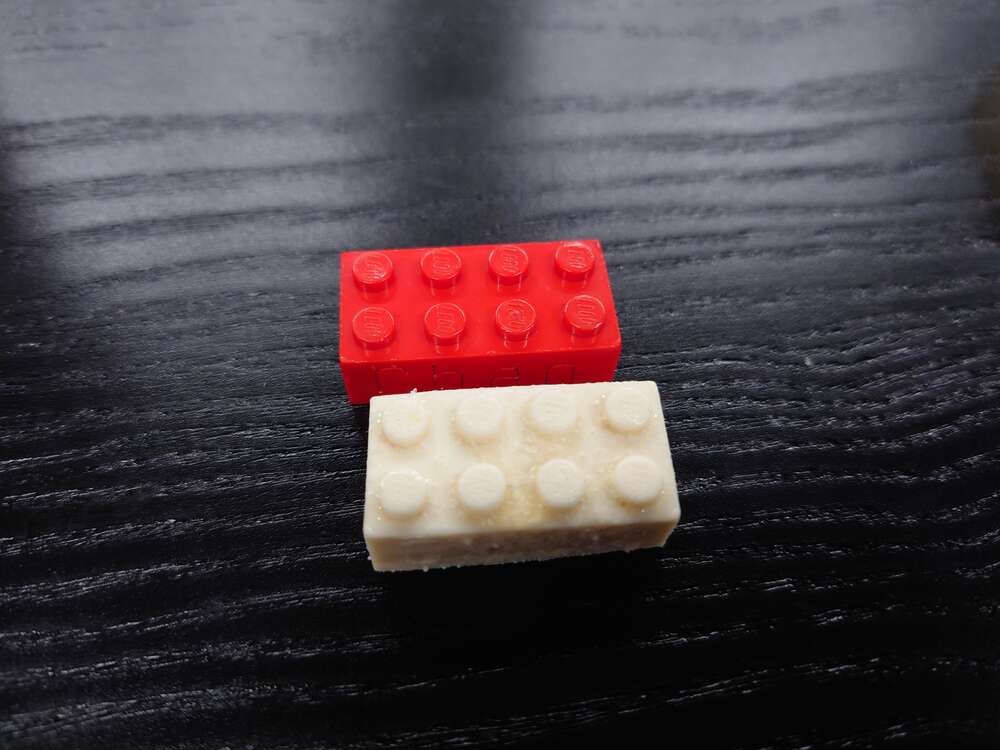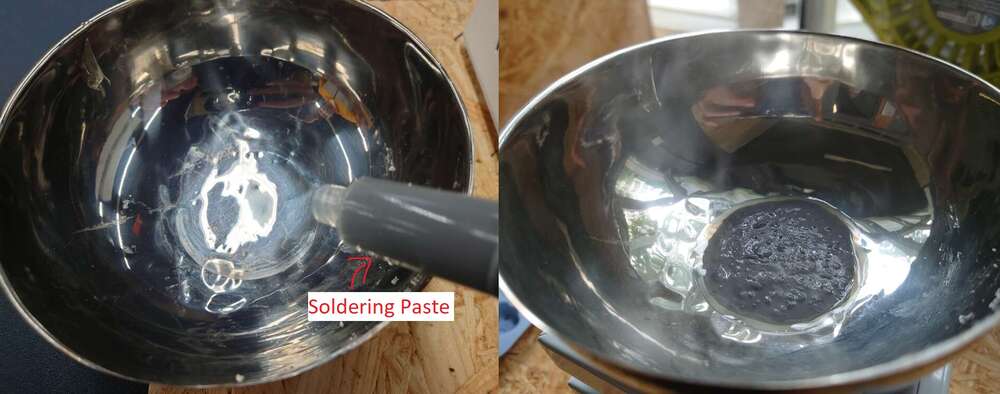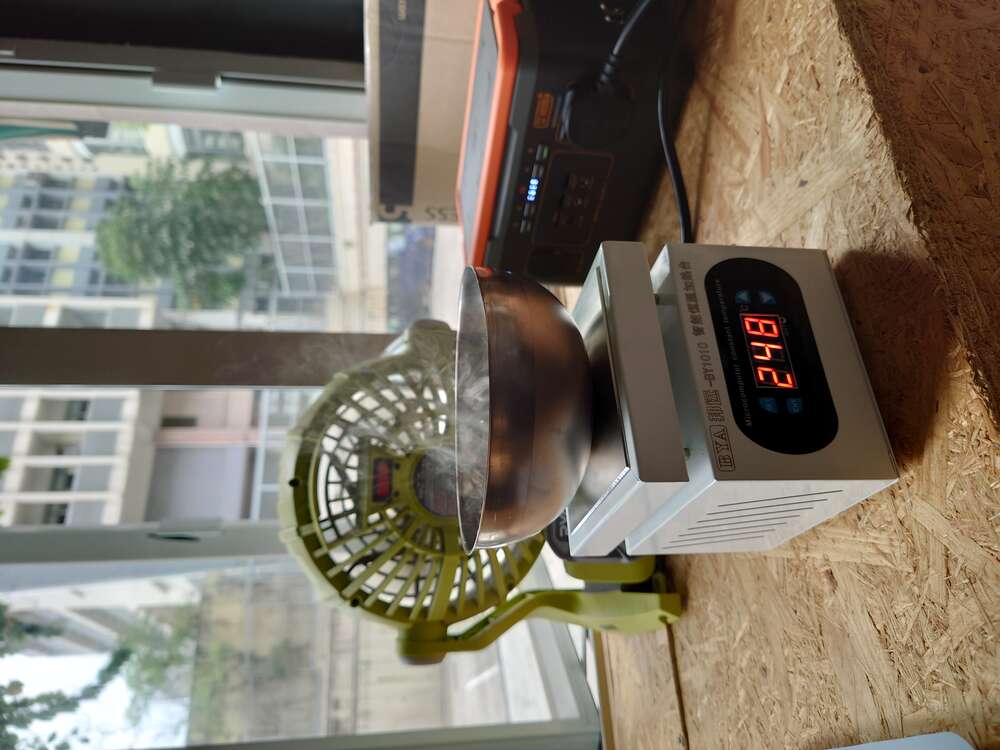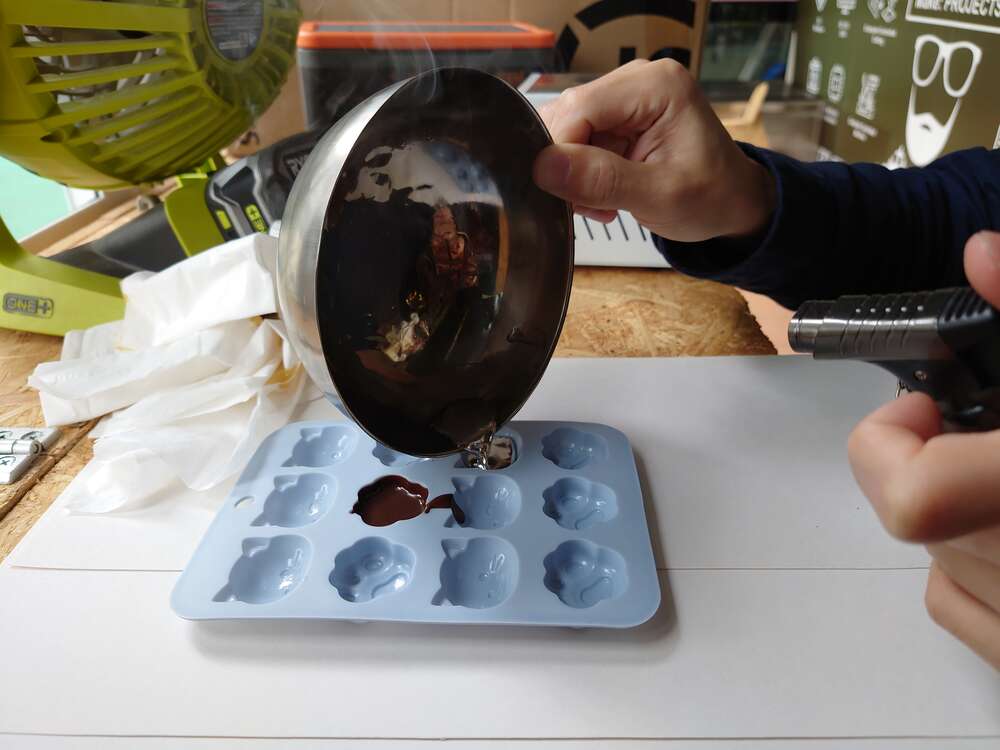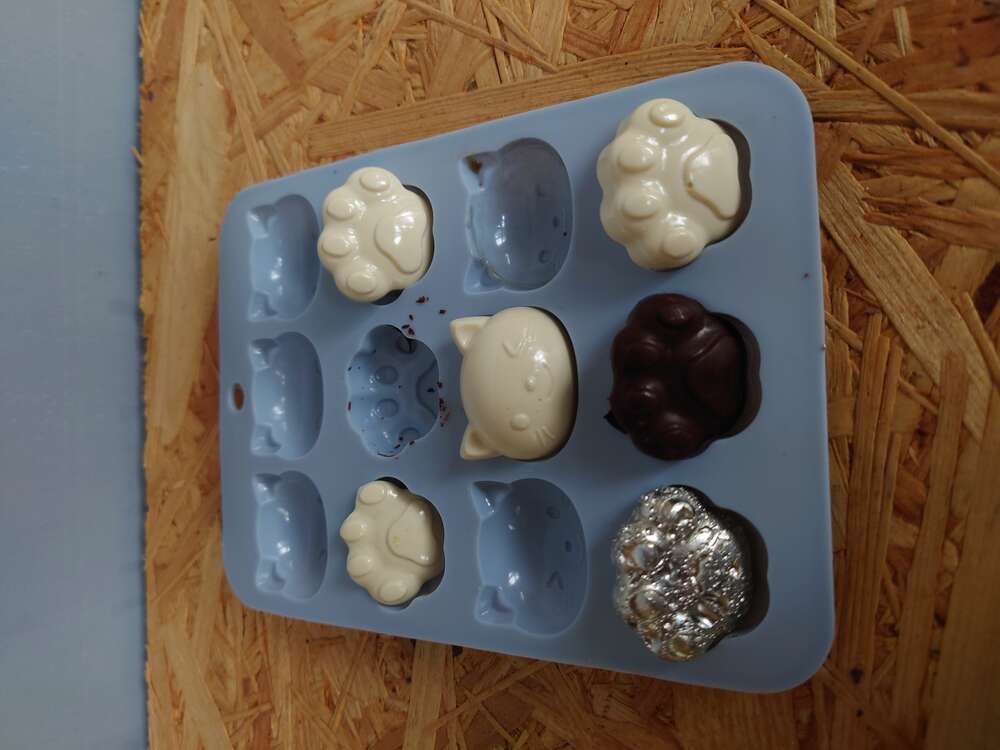molding and Casting¶
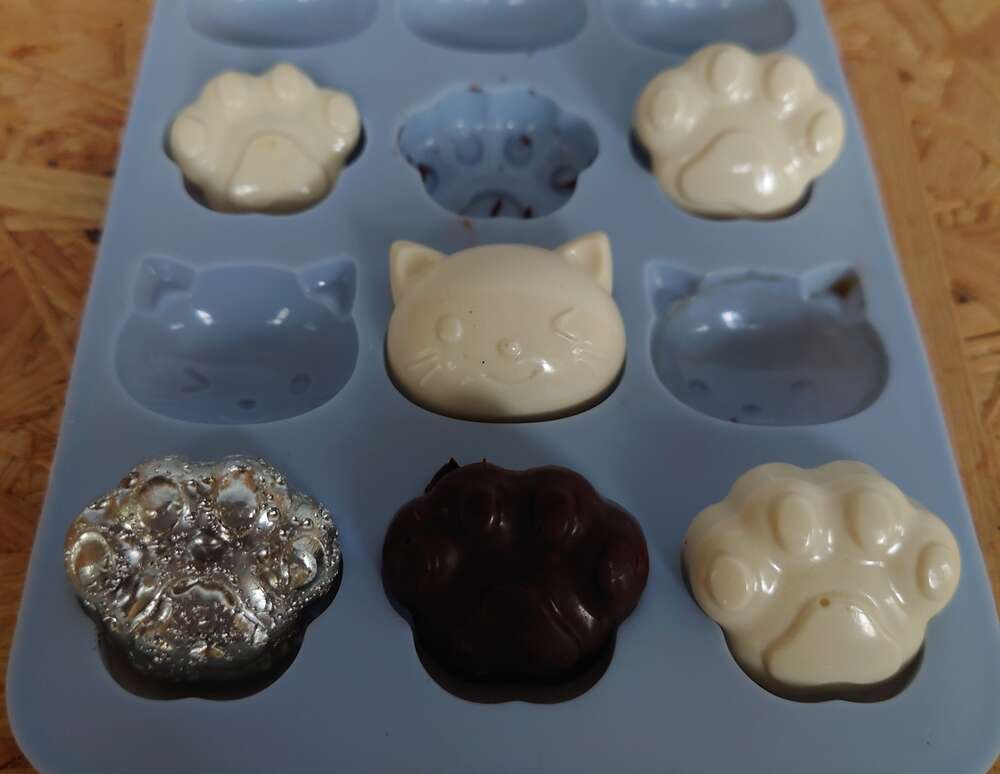
Group Assignment¶
- [✓] Review the safety data sheets for each of your molding and casting materials
- [✓] Make and compare test casts with each of them
- Documented by Darren Chan
molding and casting materials in our lab¶
1. Composi Mold¶
SDS¶

There are four types of ComposiMold listed on its website. We bought reused ComposiMold for our projects, it’s not suitable for food making. However, there is a food contact safe available(ComposiMold-FC).
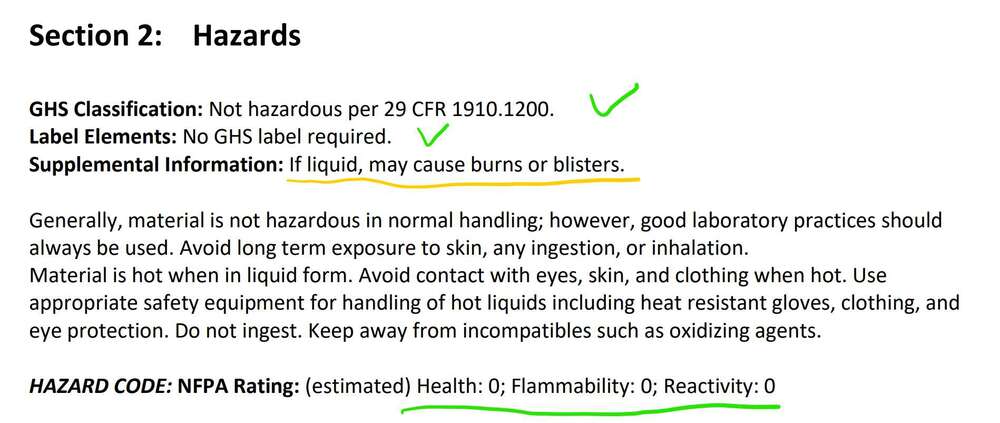
According to its SDS, ComposiMold is generally non-harmful for humans. The only thing needed to get attention is to avoid getting burnt while it’s heated.
TDS¶
This instruction teaches us how to use Composi Mold for casting. It is solid at room temperature and touches like silicone. When it’s being heated to 130-160ºF(54°C to 71°C), it will melt and become a honey-like liquid. It could be heated by a microwave oven, but we normally heat it with a heater and a bowl.
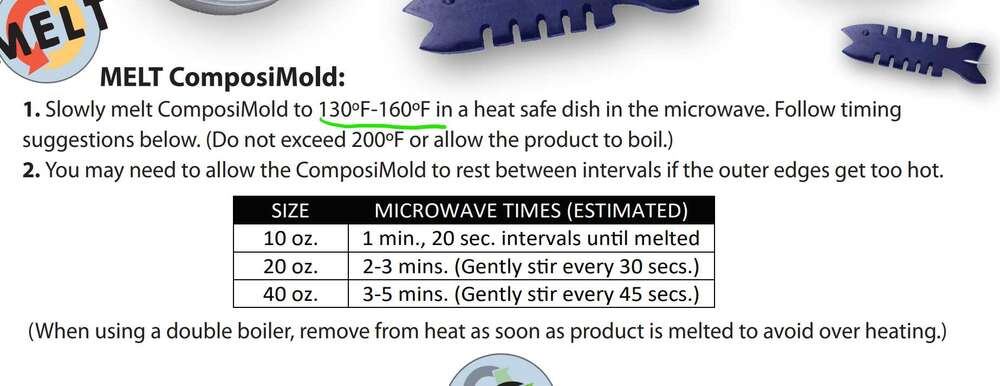
2. Ferris File-A-Wax Blocks¶

SDS¶
The File-A-Wax block we used in our lab is also generally safe. The only thing needed to attention is that its flammability index is 1. Because it’s mainly made of wax, it may cause fire when in a high-temperature environment.
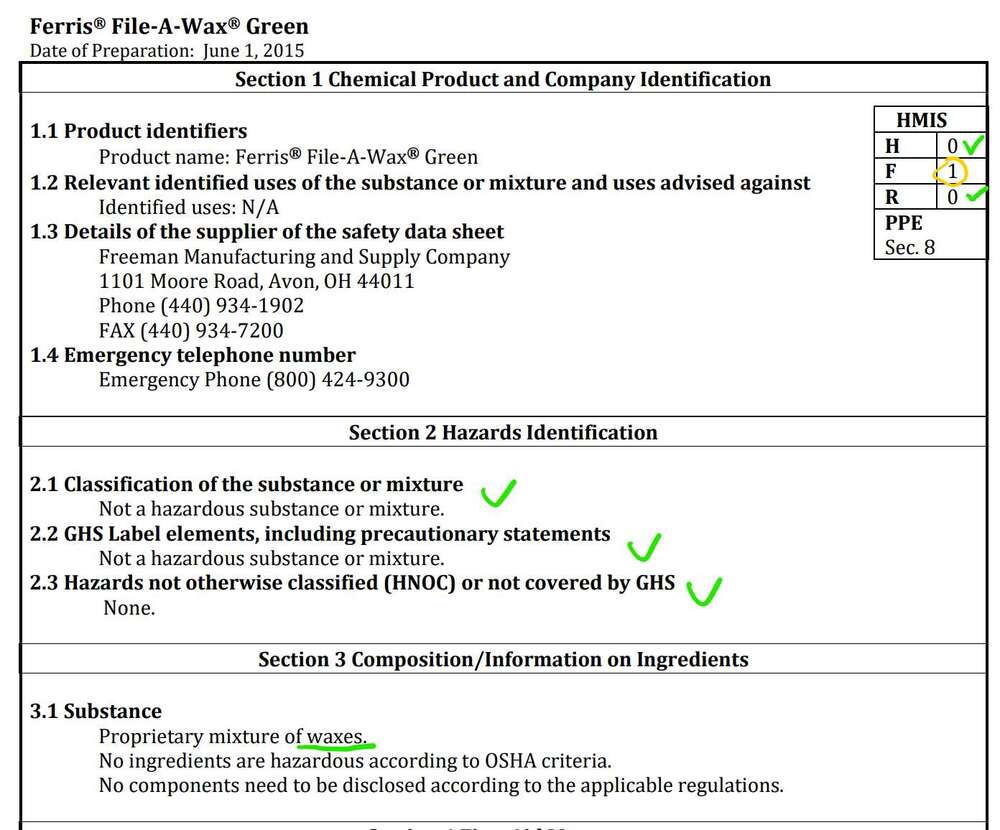
TDS¶
There are six colors available from the manufacturer. They have different physical properties for different purposes. The wax block we used in the lab is green, according to the table below, its hardness is 57, and good for High-Speed CNC.

3. RU-10 Epoxy¶
Techinical Information¶
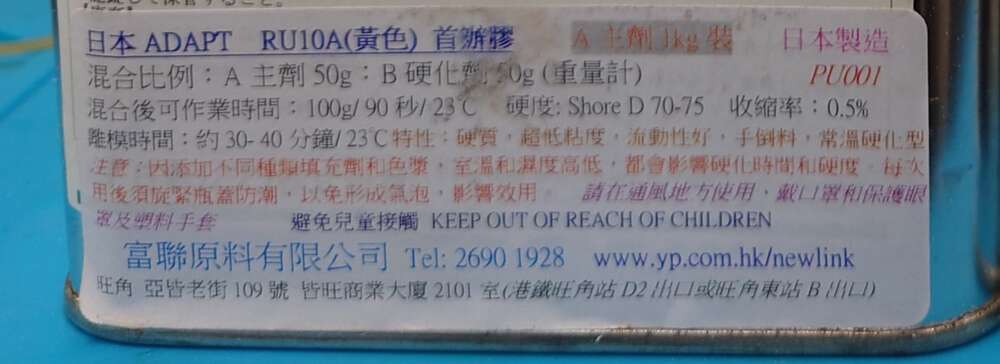
Safety Information¶
Use in a well-ventilation area Wear a mask, protection glasses, and rubber glove
4. 4012 Silicone¶
![]()
Techinical Information¶
Mix Ratio: 1:1 Set Time: 4 hours
Safety Information¶
Not found on the sticker. We will use rubber gloves and safety glasses while using this silicone.
Experimental Casts¶
Casting A Lego Brick¶
Material Used
- Composi Mold
- RU-10 Epoxy
In the first experiment, we wanted to copy a LEGO brick by casting it. We firstly made a LEGO mold with Composi Mold.
-
Build a container with some HDPE transparent sheets, the brick was fixed at the bottom with double-sided tape.
-
Put the Composi Mold into the steel bowl on an electric heater set to 80°C. The temperature was slightly higher than the recommended melting temperature range of the Composi Mold. That temperature makes the molten liquid thinner and easier to pour into the container.
-
Check the status of the molten Composi Mold with a stick, when it becomes like honey, pour it into the container until the liquid level at ~10mm higher than the top of LEGO.
-
Wait about 10 minutes, when the Composi Mold cooled down and become solid again. Take it out from the box, then take the LEGO out from the mold.
-
Mix RU-10A with equal weight RU-10B in a plastic cup, pour it into the mold within 90 seconds of operation time. Waited about 3 minutes, the liquid became hard and the color changes from transparent yellow to solid warm white.

-
The result LEGO was deformed a little bit. We think this is because the epoxy produced a lot of heat during the chemical reaction. The heat melted the mold made with Composi mold and the shape changed. Some part of the mold was molten and fusion with the epoxy.
Casting With More Materials¶
We have a lot of expired soldering paste in stock. So we wanted to try metal casting with them. The melting point of the soldering paste is about 200°C and it will melt the mold made with plastics. To support its temperature, we bought a silicone mold.
-
Squeeze a shot of soldering paste into the bowl.
-
Heat up the bowl to ~250°C. Warning! This operation must do in a good ventilation area. Because the process will produce a lot of fumes!
-
When the tin is molten, absorb any flux in the bowl with tissue paper.
-
Pour the molten tin into the silicone mold, use a torch to melt the tin left on the side of the bowl.
-
The finishing of the tin is not good. Lots of bubbles are produced during the process. We also tried cast with epoxy and chocolate, the finishing is perfect because the silicone did not melt like the Composi Mold.




